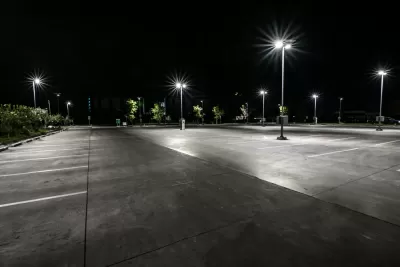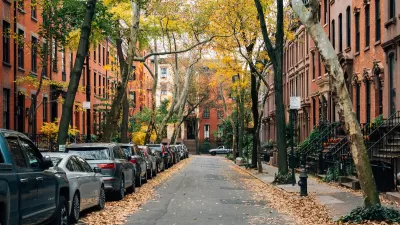A state bill awaiting Governor Gavin Newsom’s signature would prohibit parking mandates in neighborhoods within half a mile of transit.

A California law approved by the state’s legislature would eliminate minimum parking requirements around transit stations statewide in an effort to reduce housing construction costs and boost public transit use, biking, and walking. As Brian White reports for CBS 8, “If signed into law, it would essentially ban mandatory parking space requirements for residential or commercial buildings within a half-mile of public transit.”
According to Senator Anthony Portantino, a co-author of the bill who spoke with CBS 8, “We want to make sure that we respect a movement towards an alternative way of getting to work, which is on a bicycle or on mass transit.”
Additionally, reducing the number of parking spaces built can dramatically lower the cost of construction, as a parking spot can cost $40,000 to $100,000 in additional building costs. “Senator Portantino says that while parking spaces may not be required near public transit, it doesn’t mean builders will always choose to have zero parking in these areas,” and developers can make their own decisions based on the characteristics of their community and residents.
The movement to eliminate minimum parking requirements has gained momentum in recent years as more and more cities relax their regulations, particularly in areas near public transit.
FULL STORY: State bill will eliminate parking requirements for building construction near public transit

Planetizen Federal Action Tracker
A weekly monitor of how Trump’s orders and actions are impacting planners and planning in America.

DARTSpace Platform Streamlines Dallas TOD Application Process
The Dallas transit agency hopes a shorter permitting timeline will boost transit-oriented development around rail stations.

Four Reasons Urban Planners Can’t Ignore AI
It’s no longer a question of whether AI will shape planning, but how. That how is up to us.

Amtrak’s Borealis Exceeds First Year Ridership Expectations
205,800 passengers have boarded the St. Paul to Chicago line, well above initial MDOT projections.

Study: 4% of Truckers Lack a Valid Commercial License
Over 56% of inspected trucks had other violations.

Chicago Judge Orders Thousands of Accessible Ped Signals
Only 3% of the city's crossing signals are currently accessible to blind pedestrians.
Urban Design for Planners 1: Software Tools
This six-course series explores essential urban design concepts using open source software and equips planners with the tools they need to participate fully in the urban design process.
Planning for Universal Design
Learn the tools for implementing Universal Design in planning regulations.
City of Mt Shasta
City of Camden Redevelopment Agency
City of Astoria
Transportation Research & Education Center (TREC) at Portland State University
US High Speed Rail Association
City of Camden Redevelopment Agency
Municipality of Princeton (NJ)





























